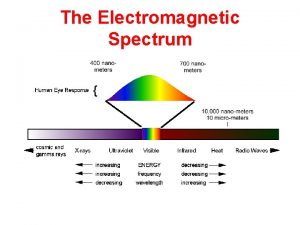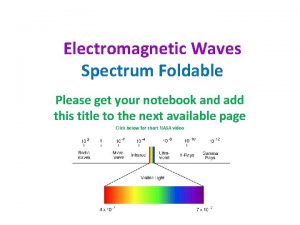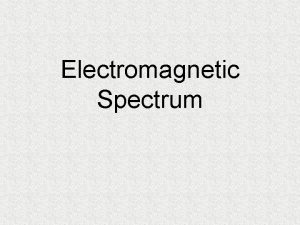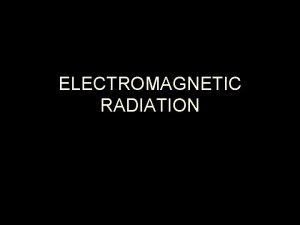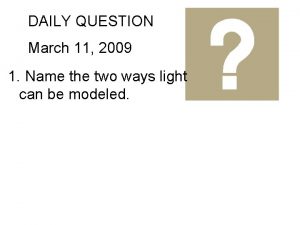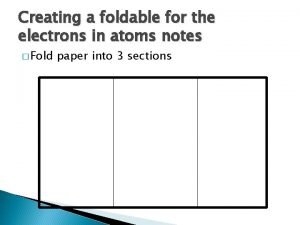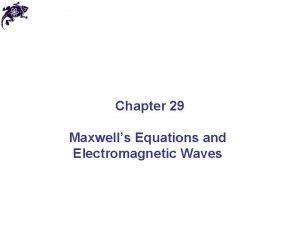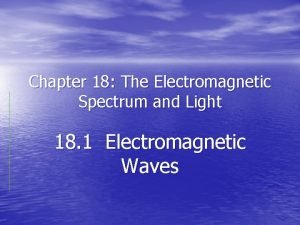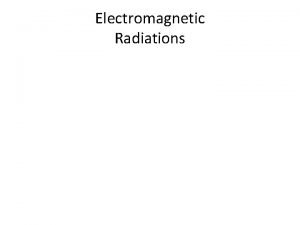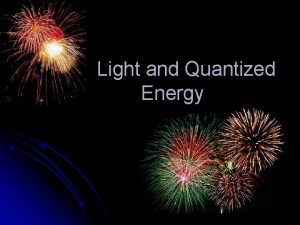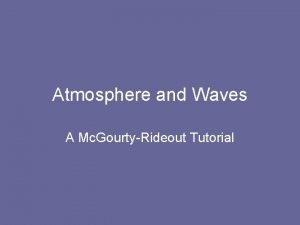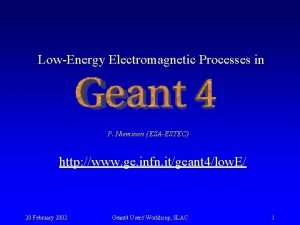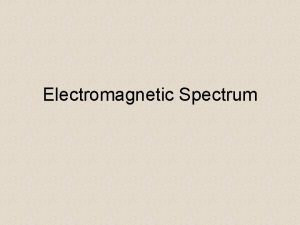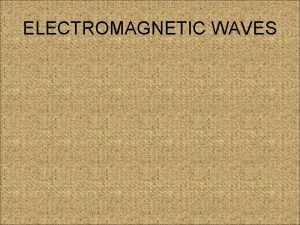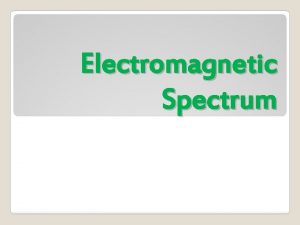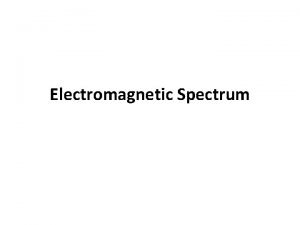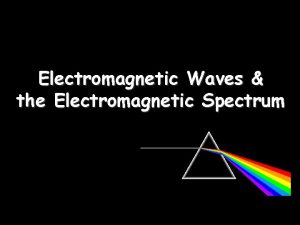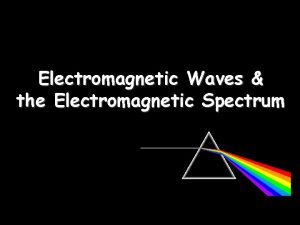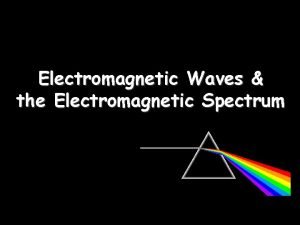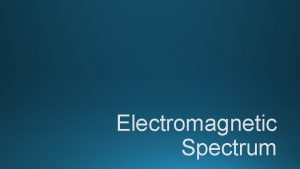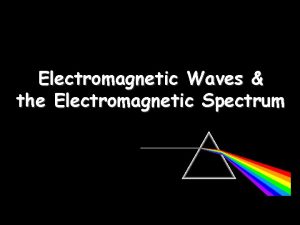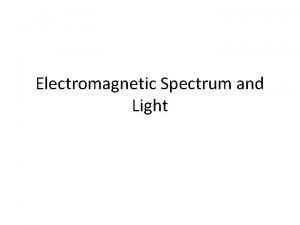ELECTROMAGNETIC SPECTRUM ELECTROMAGNETIC SPECTRUM MOST energy This Photo















- Slides: 15

ELECTROMAGNETIC SPECTRUM

ELECTROMAGNETIC SPECTRUM MOST energy This Photo by Unknown Author is licensed under CC BY-NC-ND Closer together LEAST energy • The range of electromagnetic waves when they are placed in order of increasing frequency • Low frequencies waves have the LEAST energy and high frequencies waves produce Farther apart the MOST energy

CHARACTERISTICS OF E. M. WAVES • They all travel at light speed, but have different wavelengths and Long and Low different frequencies • Used for space Short exploration because they and High DO NOT need a medium (substance) in order to travel As the wavelength decreases, frequency increases

Frequency vs. Wavelength Short and High Long and Low

TO HELP YOU REMEMBER THE ORDER… Radio Microwave Infrared Visible Ultra-violet X-ray Gamma Raging Martians Invaded Venus Using X-ray Guns Long and Low Short and High

LET’S LOOK AT EACH INDIVIDUAL WAVE

RADIO WAVES Uses: 1. Learn about the composition and motion of stars, planets, comets, dust and gas television, 2. Radio, and cell phone signals 3. Communication Longest wavelength and (ships, airplanes) lowest frequencies 4. MRI – pictures of the inside of the human body

MICROWAVES Uses: 1. Cook food 2. Radar (weather) 3. Portions of phone calls 4. Learn about the structure of nearby galaxies Long wavelength and low frequency

INFRARED Uses: 1. Show heat loss 2. Night vision googles – pick up infrared light emitted by objects with heat 3. Map the dust between stars Long wavelength and low frequencies

VISIBLE LIGHT Uses: 1. Allows us to see – the only part we can see! 2. Creates a rainbow (ROYGBIV) 3. Stars also emit visible light Medium wavelength and medium frequencies

THE NEXT WAVES HAVE HIGHER ENERGY AND ARE CONSIDERED MORE DANGEROUS

ULTRAVIOLET Uses: 1. Kills germs 2. Creates a tan OR even a sunburn 3. Treat jaundice in newborns 4. Used to reveal different gas temperatures of objects in space Short wavelength and short frequencies

X-RAYS Uses: 1. Shows broken bones, cavities, etc. 2. Airline security checks – see through bags 3. Hot gases in the universe also emit Xrays Short wavelength and short frequencies

GAMMA WAVES Uses: 1. Treat cancer 2. Kill organisms that spoil food 3. Doctor use gammaray imaging to see inside your body 4. Biggest gamma-ray generator is the Universe Shortest wavelength, highest energy = MOST dangerous

 Light spectrum wavelength
Light spectrum wavelength Electromagnetic spectrum longest to shortest wavelength
Electromagnetic spectrum longest to shortest wavelength Electromagnetic star
Electromagnetic star The electromagnetic spectrum lyrics
The electromagnetic spectrum lyrics Electromagnetic spectrum foldable
Electromagnetic spectrum foldable Characteristics of ultraviolet
Characteristics of ultraviolet Electromagnetic spectrum micrometers
Electromagnetic spectrum micrometers Em spectrum mnemonic
Em spectrum mnemonic Electromagnetic spectrum foldable
Electromagnetic spectrum foldable Electromagnetic waves formula
Electromagnetic waves formula Chapter 18 the electromagnetic spectrum and light
Chapter 18 the electromagnetic spectrum and light How do matter and energy interact when waves are generated
How do matter and energy interact when waves are generated The food
The food Types of radiation in the electromagnetic spectrum
Types of radiation in the electromagnetic spectrum What is the electromagnetic spectrum
What is the electromagnetic spectrum Electromagnetic spectrum
Electromagnetic spectrum

